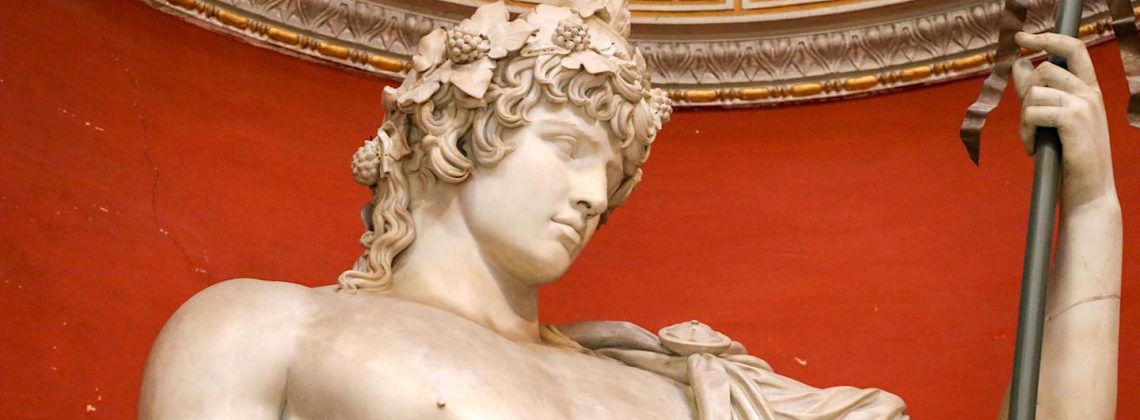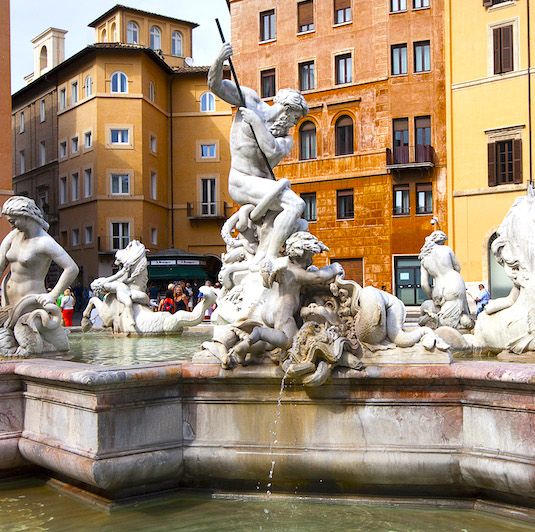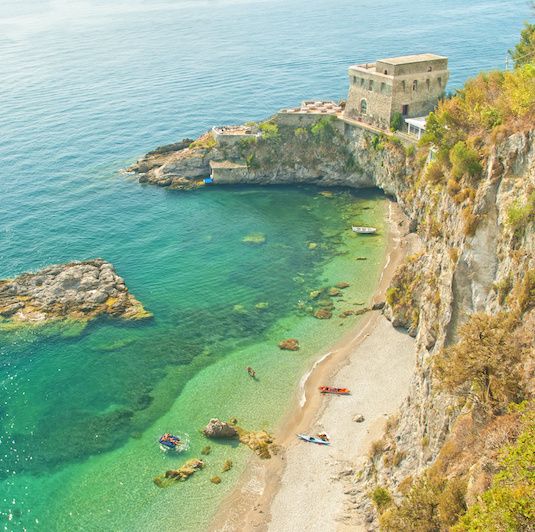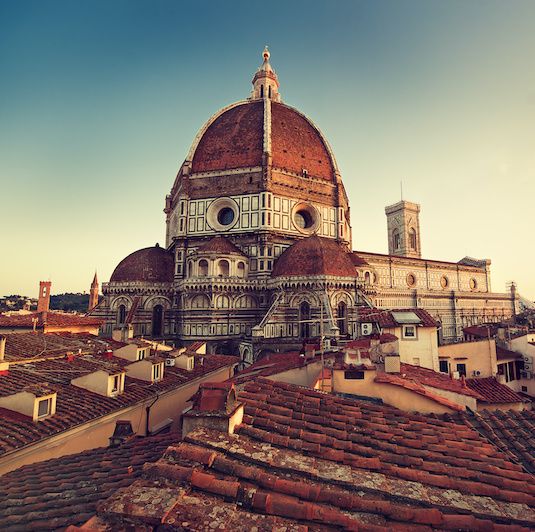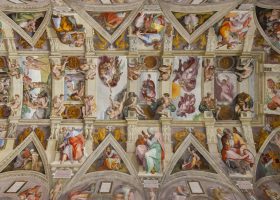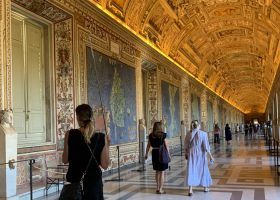Planning to visit the Vatican but unsure what famous artwork you should see? Don’t worry, we are Vatican experts so we have you covered. Here are the most famous sculptures that you absolutely positively should not miss when visiting the Vatican.
Pro Tip: Planning your visit to the Vatican? Bookmark this article in your browser so you can easily find it when you’re in the Museums. It contains tons of information that will elevate your Vatican visit. Also, see our dedicated guide to Vatican City for more planning resources, our top Vatican tours for a memorable trip, and how to visit the Vatican.
The Most Famous Sculptures at the Vatican
Art is about emotion. It is an artist unleashing their innermost thoughts and feelings onto the art piece for all to witness. It is such a powerful act, that many have been criticized, scrutinized, and even killed just for doing the act.
However, few actually see it, and even fewer understand. If you look at the sculpture and don’t feel anything, that is because you haven’t heard its story. This is the very reason we recommend guided tours.
If you hear the story and don’t get chills, then it is not great artwork. Its purpose is to inspire emotion. You don’t have to have a strong art background to appreciate art. It definitely helps, but it is not essential.
You can make your visit memorable by joining a guide with a strong art background who is skilled in the art of story-telling. That’s what we do!
Not ready to book a tour? See if a Vatican tour is worth it.
16. The Colossal Statue Of Augustus
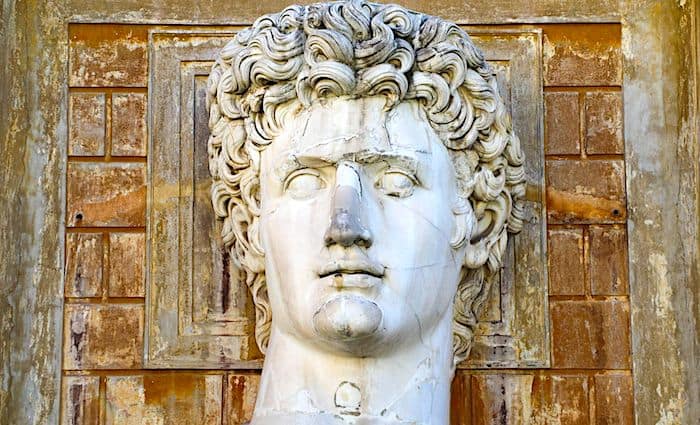
Unknown Artist | Unknown Year | White Marble | Pinecone Courtyard
Today, Instagram allows us to immortalize ourselves by adding photos for everyone to see. Sculptures were the Instagram of the ancients.
Octavianus Augustus was the first and arguably one of the most important Ancient, Roman Emperors. He created the Pax Romana ( Roman peace) after a century of strife and turmoil. He lived to the ripe, old age of 75 and was also Emperor during the early years of Jesus.
As with Instagram, we tend to show our best side in a photo. Back in the day, even if they were older, they would order a statue to be made of themselves during their youth. The strategy worked, since we can easily recognize a statue of Augustus as a young man, but have no clue what he looked like when he was older!
15. Sphere Within A Sphere
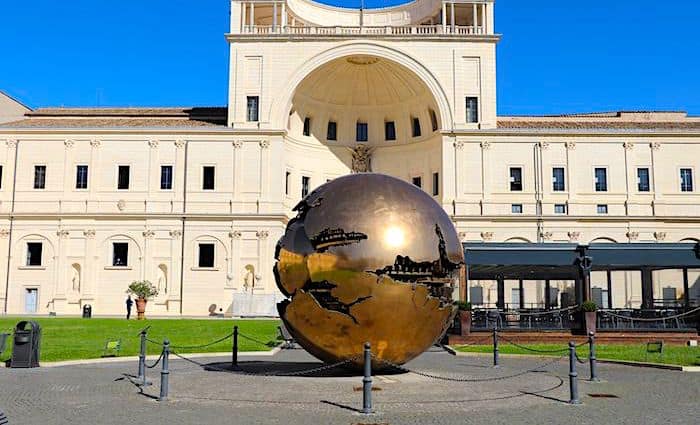
Arnoldo Pomodoro | 1990 | Bronze | Pinecone Courtyard
The Vatican believes in continuing its tradition as a patron of the arts. So when you enter the courtyard, you’ll find this modern art piece right in the middle.
The statue was created by the artist Arnoldo Pomodoro whose name translates as “Arnold the Tomato.” The artwork is called Sphere Within a Sphere and it reflects our inner and outer selves, or the side of ourselves we show others.
Personally, I see in the sphere the torment that afflicts our world today through war, hunger, and disease. But from the larger sphere a new sphere is about to break off; a new life, a new world is emerging…A work of art is a true work of art only if it moves your soul.
Enrico Bruschini, Art Historian and Official Vatican Tour Guide
Popular Rome Tours
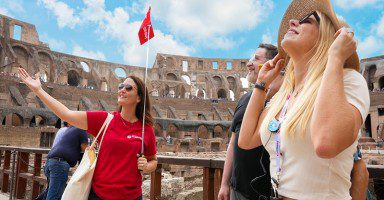
Best Selling Tour
Rome in a Day Tour with Colosseum and Vatican Museums
Seeing the best of Rome in a single day might seem like a big undertaking, but our expertly designed tour makes it effortless with skip-the-line tickets, included transportation, and engaging guides to lead the way. In just 7 hours, you’ll visit renowned sites like the Sistine Chapel, Colosseum, Trevi Fountain, and Pantheon. With fascinating stories at every stop, you can skip the stress and immerse yourself in the vibrant heritage and culture of Rome all in one remarkable day.
See Prices
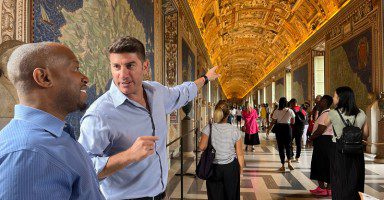
Best Price!
Privileged Entrance Vatican Tour with Sistine Chapel
Without the right access, visiting the Vatican means fighting crowds, long waits, and missing the most significant rooms and works of art. Our privileged entrance tour offers more than just entry—it’s an immersive experience led by a storytelling guide who brings the Vatican to life. Skip the line and explore the Vatican Museums, including the Raphael Rooms, the Sistine Chapel, and St. Peter’s Basilica with engaging insights that make each moment memorable and meaningful.
See Prices
Not ready to book a tour? Find out if Rome tours are worth it.
14. The Pinecone
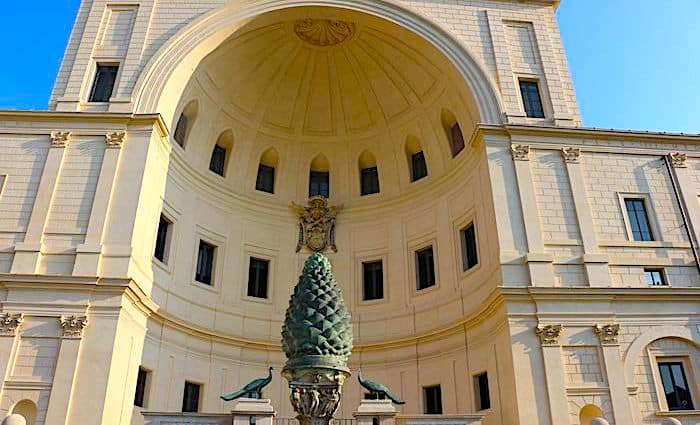
Unknown Artist | Unknown Date | Bronze | Pinecone Courtyard
The courtyard itself is named for this massive bronze pinecone that you encounter as soon as you walk outside. Dating back to the second century A.D., this statue appears to have originally been built as part of a fountain complex. If you get up close, you can see the many holes where water would have squirted out.
At some point, the statue was placed in the courtyard before you entered the first St.Peter’s Basilica, built by Emperor Constantine. In the 16th century, it was moved over to this courtyard.
13. Discus Thrower
Myron | 460 B.C. | Marble | Room of the Biga
The “Discus Thrower” is actually a Roman copy of a Greek original. As historical timelines go, the Greeks were already pondering the meaning of life while the Romans were still peasant farmers. As the Romans began to catch up to the Greeks in culture, they “borrowed” from the Greeks and would just copy their statues.
The athlete is full of concentration as he winds his body back to throw the discus. The form of the statue is perfectly symmetrical and it appears quite life-like.
The statue was found in the ruins of Hadrian’s Villa, which is about a 45-minute drive from Rome. Hadrian, who loved everything Greek, commissioned hundreds of roman copies of original Greek statues.
Of all the Roman copies they found at Hadrian’s Villa, this one is arguably one of the most beautiful. The only other one that comes close, for me, would be the Antinoos featured below.
12. The Bath Of Nero
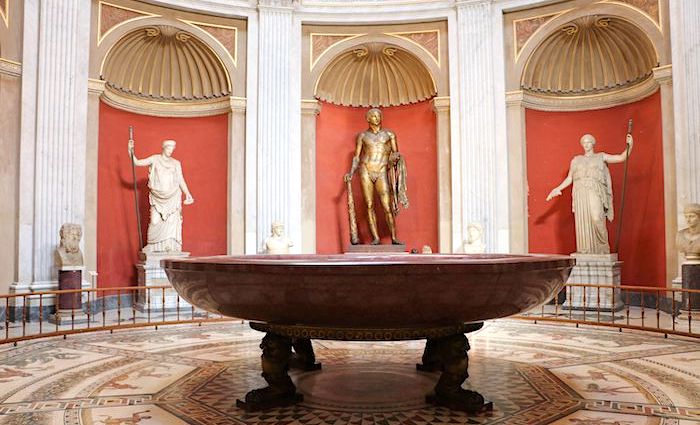
Unknown Artist | Unknown Date | Red Porphyry Marble | Round Room
The so-called ” Bath of Nero” was more likely to be a fountain than an actual bath. Diggers found the piece of marble at Nero’s house (Domus Aurea) over on Esquiline hill.
Stories circulated of Nero’s tyranny and eccentric behavior, and so over time, a rumor started about this being his actual bathtub. We will never truly know what it was used for, but we can say for sure it is a beautiful piece of marble.
This impressive piece of stone is made from a purple marble called Red Porphyry. The stone originates from Egypt and was the most highly prized stone, reserved for emperors due to its scarcity.
In order to collect one gram of purple dye, they would have to extract it from thousands of sea snails. Understandably, when the Romans found this stone, they went crazy and took it all out of Egypt!
To make Tyrian purple, marine snails were collected by the thousands. They were then boiled for days in giant lead vats, producing a terrible odor. The snails, though, aren’t purple, to begin with. The craftsmen were harvesting chemical precursors from the snails that, through heat and light, were transformed into valuable dye.
Smithsonian Magazine
11. Augustus of Prima Porta
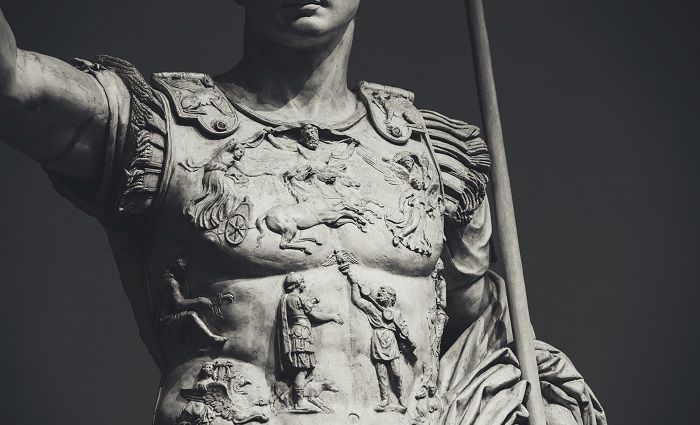
Unknown Artist | First Century A.D. | White Marble | New Wing
There are certain advantages to being the first—they are almost always remembered. Augustus was the first Emperor of the Roman Empire. He erased the chaos that had been destroying Rome more or less for the last century. Arguably, he increased the quality of life and made people want to live again.
This beautiful statue was found in 1863 in Prima Porta, a neighborhood on the outskirts of Rome today. Back in ancient times, it was the summer house of Augustus’ wife, Livia. Livia commissioned a sculpture of her husband as a military supreme commander, with gestures showing him speaking to his soldiers with great pride.
Filled with strength and intelligence, his face is captivating and makes us easily understand why not only Livia but also all of the women and men in Rome admired the emperor who had made Rome into a great and powerful empire
Enrico Bruschini, Art Historian and Official Vatican Tour Guide
10. Statue Of Hercules In Bronze
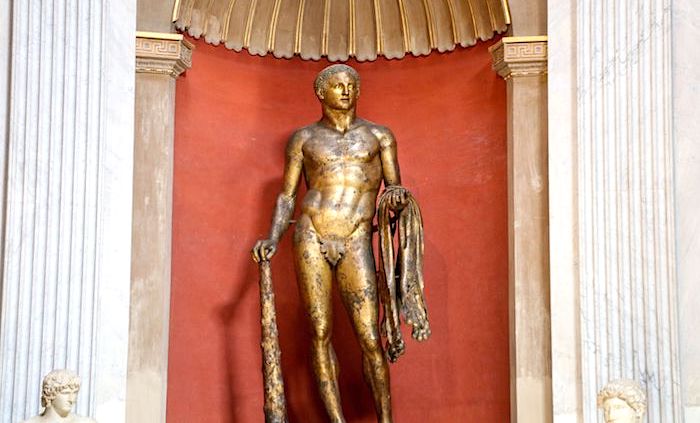
Unknown Artist | First to Third Century A.D. | Bronze | Round Room
Back in the day, the Romans often melted down bronze statues to recycle the metal. So, it’s truly a gift to find an ancient statue in bronze. This gilded Hercules has large staring eyes and curly hair. Archeologists found the statue in 1864 under a courtyard near Campo de’ Fiori not far from the Theater of Pompey where Julius Caesar was assassinated.
The statue was then given to Pope Pius IX (1846-1878) and that’s how it came to be in the Vatican today. It’s easy to identify Hercules due to the Nemean lion skin draped over his arm, the club he rests on, and the apples of the Hesperides in his left hand.
The statue has been dated with a few different dates ranging from the first to the third centuries A.D. Historians point to the style as being copied from the Neo-Attic style of the fourth century B.C.
Interesting Fact
When they found Hercules, it was lying on its back with a slab of travertine stone on top of it like a burial. On top of the slab of stone the following letters were carved: F C S for Fulgur Conditum Summanium. The statue had been struck by lightning and since Hercules was the son of Zeus, the ancient Romans took that as a sign that the statue should be properly buried together with the remains of a lamb.
Popular Vatican Tours

Best Selling Tour
Privileged Entrance Vatican Tour with Sistine Chapel
Without the right access, visiting the Vatican means fighting crowds, long waits, and missing the most significant rooms and works of art. Our privileged entrance tour offers more than just entry—it’s an immersive experience led by a storytelling guide who brings the Vatican to life. Skip the line and explore the Vatican Museums, including the Raphael Rooms, the Sistine Chapel, and St. Peter’s Basilica with engaging insights that make each moment memorable and meaningful.
See Prices
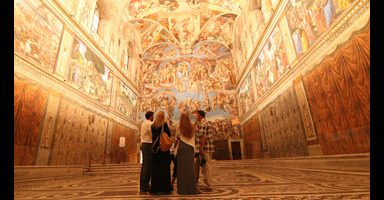
Best Price!
Exclusive Sistine Chapel After Hours Small Group Tour
When the Vatican Museums close to the public, you step inside, with no other groups and no crowds—just you, a handful of others, and Michelangelo’s Sistine Chapel in perfect silence. On this rare after-hours tour, wander the Vatican’s galleries as they were meant to be seen, free from the chaos of the day. With a small group and expert guide, explore the Raphael Rooms, the Gallery of Maps, and the treasures of the Vatican as few ever will.
See Prices
Not ready to book a tour? Check out our best Vatican tours to take and why.
9. Sarcophagus Of Saint Helena
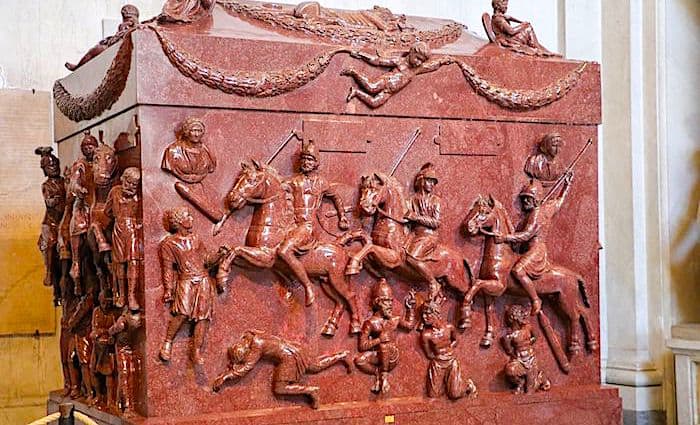
Unknown Artist | Early Fourth Century | Red Porphyry Marble | Room of the Greek Cross
Behind every great man, stands a great woman. Frequently, that woman tends to be the mother. Helena was the mother of Emperor Constantine the Great and died in A.D. 335. She was buried in a mausoleum dedicated to her in Tor Pignattara, which is on the via Casalina outside the city of Rome.
The sarcophagus you see above is made of red porphyry, which was the color reserved for emperors. The military-themed decorations would have been quite strange for a woman’s tomb, which has led scholars to believe that the resting place was originally created for a man, possibly Constantine’s father or Constantine himself.
In 1777, the sarcophagus was brought to Rome from the outskirts and restored by Gaspare Sibilla and Giovanni Pierantoni. They mounted the sarcophagus on top of four lions carved by Francesco Antonio Franzoni.
The sarcophagus was presumably made for Constantine’s father, the emperor Constantius Chlorus, as you can easily understand from the depiction of a military procession. The winged figures, known as victories, officially became ” angels” for the first time with the advent of Christianity, credited to Constantine.
Enrico Bruschini, Art Historian and Official Vatican Tour Guide
8. Artemis Of Ephesus
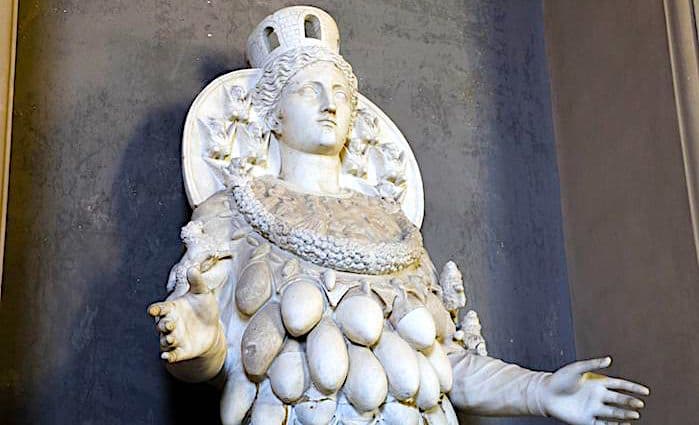
Unknown Artist | Unknown Date | White Marble | Gallery of the Candelabra
This piece is by far the most striking statue in this room and definitely the biggest eye-catcher. Many people will walk past the statue and you’ll hear them say, “Look at the multi-breasted statue!”
Upon closer inspection, you realize that they are, in fact, bull testicles. Considering that Artemis was the goddess of fertility, what symbol resonates more with fertility than bull testicles?
The statue is one of many copies that you’ll find, which would have originated in Ephesus, Asia Minor in modern-day Turkey. Ephesus was a booming port city during the Ancient Roman Empire and even today is a huge archeological park.
The city was dedicated to Artemis, and one of the biggest temples in ancient times was the Temple of Artemis. Inside the temple, you would have found statues of Artemis with bull testicles like this one.
Interesting Fact
In the bible, St. Paul goes to Ephesus to preach and is almost violently killed. By who? The merchants of the temple of Artemis made a pretty penny from the sale of statues of the goddess. If there was only one true God, then all the silversmiths and merchants would go out of business.
7. The Persian Warrior
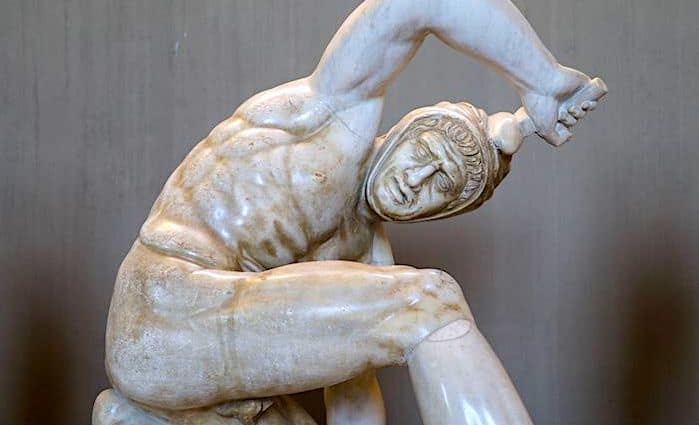
Unknown Artist | Second Century A.D. | White Marble | Gallery of the Candelabra
How do you capture defeat in stone? Look no further. The Persian Warrior shows the fear of defeat beautifully on the face of this warrior as all seems lost.
You can easily identify the person in the statue as Persian by his Phrygian cap (conical-shaped beret). His body is in a defensive position moving away from the blade of his enemy while he is grabbing his sword with his right hand to strike back.
This Roman copy was probably made around the year A.D. 110 and would have been part of a series of statues in bronze commemorating Greek victories over their enemies.
Attalos II of Pergamon made 2 sets of these votive statues with one set being placed in Athens on the Acropolis and the other in Pergamon itself known as the statues of ” Little Barbarians”. The original of this statue would have been part of a group of Greek victories over the Persians at the battle of Marathon in 490 BC. This copy of the statue was discovered in Rome between 1503 and 1512.
Vatican Official Archives
6. Apoxyomenos
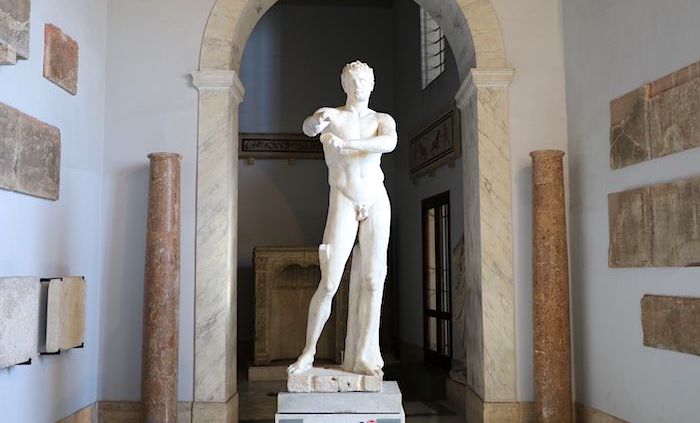
Unknown Artist | Original Fourth Century B.C. | White Marble | Room of the Apoxyomenos
How perfect would this statue be in a commercial for Bed, Bath, and Beyond? Apoxyomenos literally means “to clean oneself” and that is exactly what the portrayed athlete is doing. Back in the day, athletes would clean themselves by rubbing oil into their skin, applying dust, and would scrape it off with a curved instrument called a strigil.
According to the Vatican Official Archives, “The statue is a Roman copy from around 50 AD of an original greek bronze sculpture by the great Lysippus from around 320 BC. Of particular note is the motion of his foot in the air and also the extension of the arm which creates space and gives depth to the sculpture”.
The Ancient Greeks knew about soap but limited it to washing clothes. Both ancient Greeks and Romans used to rub their skin with oil and pulverized pumice stone, then emove it using a strigil
Enrico Bruschini, Art Historian and Official Vatican Tour Guide
5. Antinoos
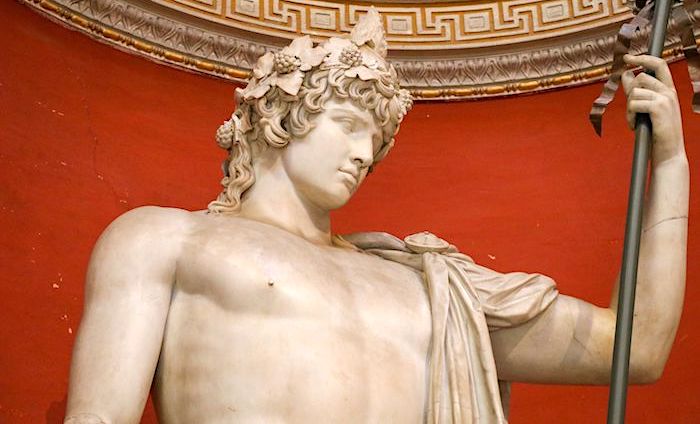
Unknown Artist | Second Century A.D. | White Marble | Round Room
Antinoos was the young lover of the Roman Emperor Hadrian. According to legend, Antinoos was vacationing with the emperor in Egypt. He heard a prophecy that the emperor would die unless he gave up his most precious thing. Antinoos believed he could save the emperor and committed suicide by throwing himself into the Nile river.
Hadrian was completely overcome with grief and sadness. He then decided to deify Antinoos and had statues all throughout the empire erected in his honor. This is why statues of Antinoos are the most reproduced in antiquity. Hadrian also founded a city in his name called Antinopolis. If that’s not love, then what is?
Antinoos is depicted here as the young god Bacchus with a crown of ivory. When I look at this statue, the face reminds me a bit of Alexander the Great. The artist depicted him with a broad chest and muscular arms. There’s also confidence in his gaze with a hint of sadness.
It is easy to recognize Antinoos, still loved today by the women of modern Roe for his beautiful countenance framed by curls, the sad look on his face, the fleshy lips, and the large thorax.
Enrico Bruschini, Art Historian and Official Vatican Tour Guide
4. The Belvedere Torso
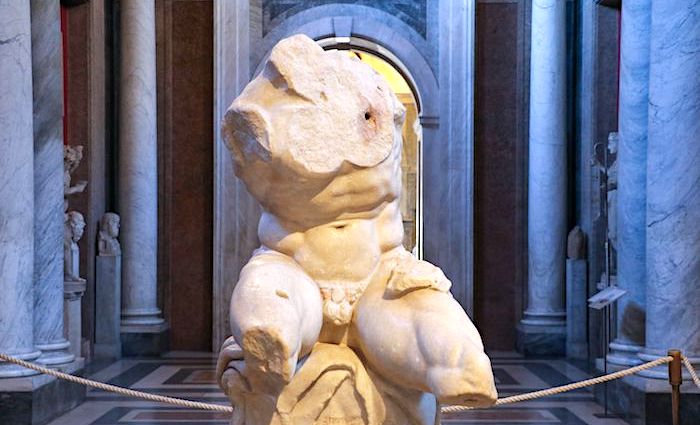
Apollonios | First Century B.C. | White Marble | Room of the Muses
Many are surprised when they walk into this room and find just a torso by itself. Why the heck did the Vatican feature a statue with no head, hands, or feet right in the middle of a room? In modern times, we take for granted all the resources we have to aid us in understanding anatomy.
The magic of this statue is that the body is in motion, contorting to his left, and all of his muscles complement that movement perfectly. This indicates that the sculptor had intimate knowledge of anatomy. This was a big deal even in the Renaissance period since it was forbidden to dissect humans to study muscles and anatomy.
This statue was found in the late 15th century and was in the Vatican collection by 1530. It would be a marble copy of an original bronze made sometime in the mid-second century B.C.
While the exact figure is unknown, many believe it to be Ajax contemplating his suicide after losing the competition with Odysseus from the Iliad. We do know the name of the sculptor because he engraved this statement on the statue: Apollonios, son of Nestor, the Athenian, created it.
Interesting Fact
Michelangelo displayed his admiration for this statue repeatedly in the Sistine Chapel. In the Chapel, the angels around each ceiling painting, are curving their bodies in the same direction as the torso.
In his Last Judgement, St. Bartholomew’s body also contorts to a degree in a similar fashion. In his twilight years, practically blind, he was said to visit the statue regularly and just run his hands over the muscles.
This is the work of a man who knew how to do it better than nature.
Michelangelo
Popular Vatican Tours

Best Selling Tour
Privileged Entrance Vatican Tour with Sistine Chapel
Without the right access, visiting the Vatican means fighting crowds, long waits, and missing the most significant rooms and works of art. Our privileged entrance tour offers more than just entry—it’s an immersive experience led by a storytelling guide who brings the Vatican to life. Skip the line and explore the Vatican Museums, including the Raphael Rooms, the Sistine Chapel, and St. Peter’s Basilica with engaging insights that make each moment memorable and meaningful.
See Prices

Exclusive Value
Exclusive Sistine Chapel After Hours Small Group Tour
The Vatican Museums are packed with crowds by day, but at night, they’re yours to explore. On this exclusive after-hours tour, step into the world’s most treasured collection after it has closed to the public. With a small group and expert guide, roam the Raphael Rooms, the Gallery of Maps, and Michelangelo’s Sistine Chapel without the chaos. This isn’t just a tour. It’s a once-in-a-lifetime privilege to experience the Vatican as few ever will!
See Prices
Not ready to book a tour? Check out our best Vatican tours to take and why.
3. Apollo Belvedere
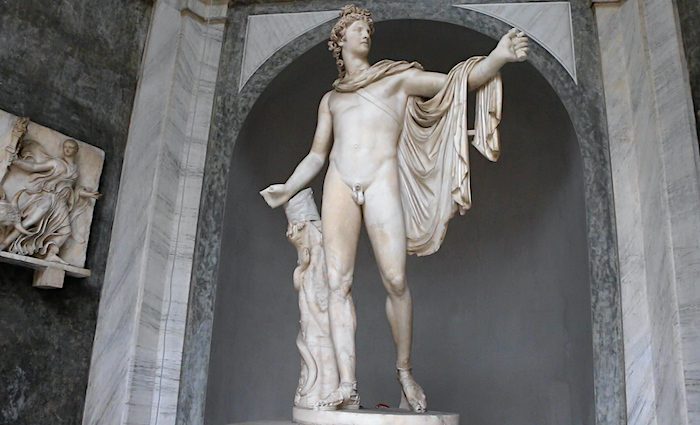
Unknown Artist | Second Century A.D. | White Marble | Octagonal Courtyard
The Apollo Belvedere arrived at the Vatican in 1508. It was owned by Pope Julius II before he was even pope. So, like many popes before him, he brought all his artwork with him into his new home, the Vatican, upon ascending to the purple. In the statue, the sun god Apollo has just let go of an arrow and is watching where it lands.
This particular statue is a Roman copy from the mid-second century A.D. of an original Greek bronze statue by Leochares from around 320 B.C.
The exquisite hairstyle and flowing cape are remarkable details for that period. The Greek writer Pausanias wrote that this beautiful statue once adorned the Agora, Athen’s main square.
Interesting Fact
If you look closely at the face of Apollo, you will see a resemblance to Jesus Christ in the Last Judgement by Michelangelo who would have studied these statues and used them as inspiration for his own works.
Of all the works of antiquity that have escaped destruction, the statue of Apollo represents the highest ideal of art.
Johann Joachim Winckelmann, 18th-Century Art Historian
2. Faun with the Infant Dionysius
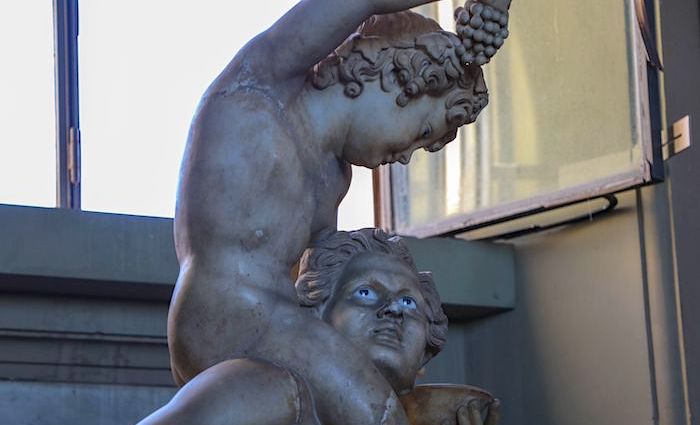
Unknown Artist | Unknown Date | White Marble | Gallery of the Candelabra
Did you know that ancient statues had eyes? While this may seem like a crazy idea, take a look at the photo above. You’ll see that the Faun and infant Dionysius have glass eyes. While strange to us today, adding eyes made the statue much more life-like.
Ancient statues were also painted. When you see this statue in person, take a close look at the hair of infant Dionysius. There, you’ll see paint remnants.
The paints used were natural colors and after two thousand years beneath the earth or under the rain and sun these have disappeared for the most part.
Enrico Bruschini, Art Historian and Official Vatican Tour Guide
1. Laocoön Group
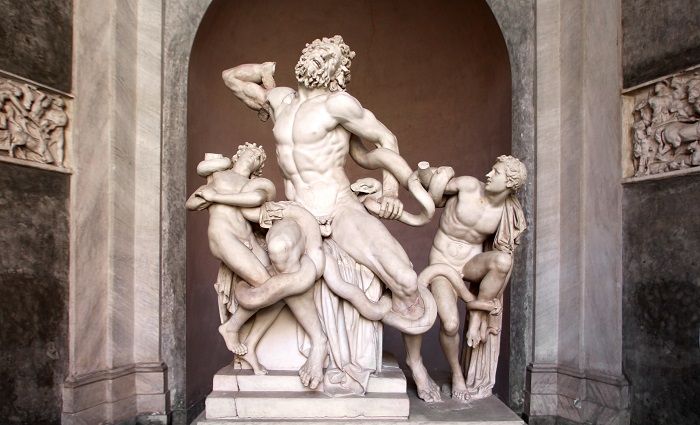
Hagesandros | First Century A.D. | White Marble | Octagonal Room
If you’re a Star Wars fan, the Laocoön might remind you of Han Solo when he was frozen in carbon for Jabba the Hut. The sculptor was able to capture the precise moment of agony.
The statue was discovered on Esquiline Hill in 1506 and Pope Julius II was immediately informed. It is believed to be an original Greek statue made around 40 B.C. Once uncovered, they identified the statue right away as the Laocoön Group of statues made by sculptors on the island of Rhodes.
This work represents a story from the “Aeneid” by Virgil. In the story, the Trojans believed the war to be over when they received the Trojan horse from the Greeks. The priest Laocoön was the exception and warned that the horse would be their downfall. Athena, who sided with the Greeks, sent two serpents to kill the priest and his two sons, quieting them forever. The rest is history.
Interesting Fact
When they found the statue, it was missing its right arm. Many artists made their own renditions of the arm, depicting it pointing straight up in the air. Michelangelo looked at the body movement and realized that the arm should be bent.
A Swedish archeologist discovered the original arm in the 17th century, and guess what it looked like? The arm bent just as Michelangelo had imagined it. Supposedly, the museum connected Michelangelo’s arm to the back of the statue and it’s still there today. But this remains to be confirmed.
Not ready to book a tour? Find out if a Vatican tour is worth it.
Here is Where to Stay in the Most Popular Destinations
Rome, Florence, Venice, and the Amalfi Coast and Capri

